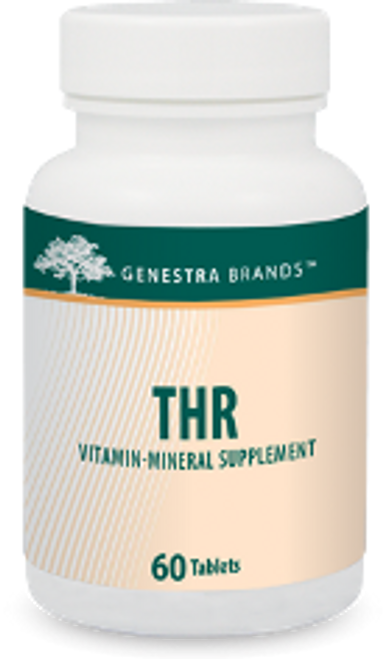Product Overview
Genestra Digest Dairy Plus- 90 tablets
• Robust formulation • Supports digestion of all dairy products • Suitable for vegetarians • Contains vegetable rennin. • Contains lactase • 3,000-29,700 FCC acid lactase units per day helps in lactose digestion (1)
Digest Dairy Plus is designed to assist in the digestion of dairy products. With lactase, protease and lipase, all major nutrient types in dairy foods are targeted. The addition of rennin provides rapid coagulation of milk protein in the stomach. In in vitro laboratory tests, the effect of one Digest Dairy Plus capsule added to 568 ml of whole milk under intestinal conditions was investigated. Casein and non-casein proteins were digested to short peptides and amino acids. Fat triglycerides were broken down to monoglycerides and free fatty acids, and lactose was virtually undetectable. Each capsule of Digest Dairy Plus will digest the equivalent of 568 ml of whole milk in vitro within a 3 hours period (2).
References: 1 NHPD AbLS Lactase. September 2009. 2 Seroyal. Data on File.
Additional product info: Lactose malabsorption is characterised by deficiency of lactase, an intestinal enzyme that hydrolyses lactose to its components galactose and glucose. It is a very common condition, reaching 70% in southern Italy. High concentrations of lactase are physiologically present in neonates; nevertheless, postweaning, a genetically programmed and irreversible reduction of its activity occurs in the majority of the world’s population. The presence in the colonic lumen of malabsorbed lactose does not necessarily result in gastrointestinal symptoms. When this condition is related to uncomfortable clinical manifestations as bloating, abdominal pain and diarrhoea, ‘lactose intolerance’ occurs. Worldwide, up to 50% of malabsorbers exhibits symptoms. Nowadays, the usual behaviour for this condition consists of the avoidance of milk and dairy products from the diet. However, this restriction leads to a reduction of intake of substances such as calcium, phosphorus and vitamins, and may associate with decreased bone mineral density. A double-blind, placebo-controlled, crossover study, evaluated the efficacy of the addition to the milk, 10 h and 5 min before its consumption, of lactase obtained from Kluyveromyces lactis in lactose malabsorbers with intolerance. Each of the 30 patients enrolled underwent three H2 breath tests, in a random order. The authors used 400 ml of cow’s semi skimmed milk as substrate and a ?-galactosidase obtained from K. lactis. The test A was carried out adding to the milk the enzyme (3000 UI), 10 h before its consumption; the test B was performed adding the ?-galactosidase (6000 UI) 5 min before milk ingestion and the test C was made using placebo. The study showed a significant reduction of the mean maximum H2 concentration, a significant reduction of the mean cumulative H2 excretion and a significant reduction of the mean clinical score after both test A and test B compared with test C. Moreover, with regard to the mean clinical score, there was a significant reduction after test A with respect to test B. The study shows that in lactose malabsorbers with intolerance, the lactase obtained from K. lactis can represent a valid therapeutic strategy, with objective and subjective efficacy and without side effects (3).
The aim of another study was to assess whether supplementation with tilactase or Lactobacillus reuteri, when compared to a placebo, affects hydrogen breath excretion and gastrointestinal symptoms in lactose intolerant patients during lactose breath test (H,-LBT). Sixty lactose intolerant patients were randomized to three 20 patients-treatment groups: tilactase group (tilactase 15 minutes before control H2-LBT, 4 pills containing lactase from Aspergillus oryzae (9000 U)); placebo group (placebo, 15 minutes before control H2-LBT); Lactobacillus reuteri group (LR) (LR b.i.d. during 10 days before control H2-LBT). LBT normalization rate was significantly higher in tilactase and LR groups with respect to placebo. Tilactase was significantly more effective than LR in achieving LBT normalization. Both significant reduction of mean peak H2 excretion and improvement of the mean clinical score were observed in tilactase and LR groups after treatment with respect to placebo. Tilactase was significantly more effective than LR in reducing both mean peak hydrogen excretion and mean clinical score. In lactose intolerants, tilactase strongly improves both LBT results and gastrointestinal symptoms after lactose ingestion (4).
Lactase from Aspergillus oryzae at 3,000-29,700 FCC acid lactase units per day, assists in the digestion of foods containing lactose and helps prevent symptoms of lactose intolerance (5).
Protease from Bacillus subtilis is a microbially-derived proteolytic enzyme which catalyses the hydrolysis of polypeptides such as gliadin and casein proteins into peptides of lower molecular weight. Protease is included in Genestra Brands™ Digest Dairy Plus to assist with digestion of dietary proteins. Protease from Bacillus subtilis has been affirmed as generally recognized as safe (GRAS) in the United States (6).
Enzymes from Aspergillus oryzae have been used in Asia for over 2000 years for production of koji, an enzyme preparation used in the production of miso, sake and soy sauce (7). Recently, oral use of fungal protease derived from Aspergillus oryzae has been shown to improve enteric protein digestion and utilization. In a randomized human clinical trial, subjects consumed a whey protein concentrate containing 42.5 g protein, or 42.5 g whey protein concentrate in combination with 2.5 g or 5 g of an enzyme preparation containing fungal proteases from Aspergillus oryzae and Aspergillus niger. Subjects assigned to receive either 2.5 g or 5 g of enzyme preparation containing fungal proteases in combination with a large quantity of protein excreted significantly less nitrogen in a 24 hour period following protein consumption, when compared to control subjects. Total serum amino acids were also significantly greater in test subjects compared to control subjects, indicating more complete protein metabolism when oral proteolytic enzymes are taken in combination with a protein-containing meal. As a digestive aid, fungal proteases were found to significantly increase digestion and absorption of whey protein (8).
Fungal proteases from Aspergillus oryzae help digest proteins and are used as a digestive aid when consumed at 6250-125000 FCC hemoglobin units on the tyrosine basis, or 7.5-300 FCC spectrophotometric acid protease units, per day (9). Bromelain is the name given to the crude aqueous extract obtained from the stem and fruit of the pineapple plant (Ananas comosus Merr.). Its main active components include a number of enzymes showing proteolytic activity, which were first shown to be anti-inflammatory by Uhlig (1981). Bromelain’s mode of action as an anti-inflammatory and analgesic agent is thought to be multifaceted. There is experimental evidence to suggest that its effects on blood coagulation (through increasing serum fibrinolytic activity) and prostaglandin levels (by decreasing levels of PGE2 and thromboxane A2) may be important in reducing inflammation. Its action as an analgesic is thought to be both as a secondary effect of reducing pain-inducing factors, such as oedema, debris and immune complexes, and through a direct influence on pain mediators such as bradykinin. A study investigated the effects of bromelain on mild acute knee pain of less than 3 months duration in otherwise healthy adults. Two validated questionnaires (WOMAC knee health Index and the Psychological Well-Being Index) were completed at baseline and after one month’s intervention with bromelain, randomly allocated to volunteers as either 200 mg or 400 mg per day. In both treatment groups, all WOMAC symptom dimension scores were significantly reduced compared with baseline, with reductions in the final battery (total symptom score) of 41 and 59% in the low and high dose groups respectively. In addition, improvements in total symptom score and the stiffness and physical function dimensions were significantly greater in the high-dose (400 mg per day) compared with the low-dose group. Compared to baseline, overall psychological well-being was significantly improved in both groups after treatment, and again, a significant dose-response relationship was observed. This open study has shown a significant effect of bromelain on reducing symptoms of knee pain and improving well-being in otherwise healthy adults. In addition, improvements were significantly higher in a number of physical and well-being dimensions in the group receiving the higher dose (10).








